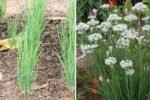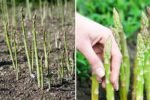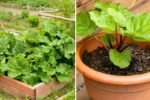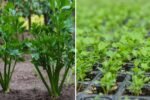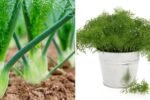Composting is one of the most eco-friendly and cost-effective ways to enrich your garden soil while reducing household waste. By turning kitchen scraps, garden clippings, and other organic materials into nutrient-rich compost, you provide your plants with natural fertilizers that boost growth and soil health. The best part? You don’t need a large backyard, expensive equipment, or specialized knowledge to get started. This guide will show you how to make compost at home the easy way, with step-by-step instructions, tips for maintaining balance, and tricks to speed up the process.
Why Composting Matters
Composting benefits both your garden and the environment:
- Reduces Waste: Diverts kitchen and garden waste from landfills, reducing methane emissions.
- Improves Soil Quality: Adds essential nutrients, organic matter, and beneficial microorganisms to your soil.
- Enhances Plant Growth: Nutrient-rich compost promotes stronger roots, healthier plants, and more abundant blooms.
- Reduces Need for Chemical Fertilizers: Natural compost decreases dependence on synthetic fertilizers.
By composting at home, you create a sustainable cycle—organic waste becomes nourishment for your plants, reducing both waste and your gardening expenses.
Step 1: Choose a Composting Method

There are several ways to compost at home. Pick a method that suits your space, lifestyle, and waste production.
1. Traditional Compost Pile
- Ideal for those with a backyard.
- Create a pile in a corner of your garden.
- Layer green and brown materials to maintain balance.
2. Compost Bin
- Contained and tidy, perfect for small yards or urban gardens.
- Bins can be purchased or DIY using wood, wire, or plastic containers.
- Easier to control moisture and prevent pests.
3. Worm Composting (Vermicomposting)
- Uses worms (usually red wigglers) to break down food waste.
- Great for small indoor spaces or apartments.
- Produces nutrient-dense compost, known as worm castings.
Tip: Start small. Even a small bin or container can produce enough compost for potted plants or a garden bed.
Step 2: Gather Compostable Materials

A successful compost needs a balance of green and brown materials.
Green Materials (Nitrogen-Rich)
- Kitchen scraps: fruit peels, vegetable scraps, coffee grounds, tea bags.
- Grass clippings, green garden trimmings.
- Avoid meat, dairy, or oily foods—they can attract pests.
Brown Materials (Carbon-Rich)
- Dry leaves, straw, hay, or shredded newspaper.
- Cardboard pieces, paper towels (unbleached), and sawdust (untreated).
Balance Tip: Aim for roughly 2–3 parts brown to 1 part green. This ensures the compost heats up, decomposes efficiently, and avoids foul odors.
Step 3: Layer and Build Your Compost

Proper layering is key to fast decomposition and a healthy compost pile.
Layering Method:
- Start with a layer of coarse brown materials like twigs or straw at the bottom for drainage.
- Add a layer of green materials (kitchen scraps, grass clippings).
- Follow with another layer of brown materials.
- Repeat until your bin or pile is full.
Tip: Chop or shred larger materials for faster decomposition. Small pieces increase surface area, helping microorganisms break down materials efficiently.
Step 4: Maintain Moisture
Your compost should feel like a wrung-out sponge—moist but not soggy.
How to Maintain Moisture:
- Sprinkle water lightly if the pile is dry.
- Cover compost with a lid, tarp, or old carpet to retain moisture and heat.
- If the pile is too wet, add more brown materials like dry leaves or cardboard to absorb excess moisture.
Tip: Regular moisture control prevents bad odors and keeps your compost healthy.
Step 5: Turn Your Compost

Turning your compost introduces oxygen, which accelerates decomposition and prevents anaerobic conditions that can cause foul smells.
How to Turn Compost:
- Use a garden fork or compost aerator to mix materials every 1–2 weeks.
- Turn the outer edges toward the center to mix older compost with fresh scraps.
- Ensure green and brown layers are evenly distributed after turning.
Tip: Frequent turning speeds up the composting process, allowing you to harvest finished compost faster.
Step 6: Monitor Temperature

A well-maintained compost pile heats up as microorganisms break down materials.
Temperature Guidelines:
- Optimal range: 120–160°F (49–71°C) for hot composting.
- Cold composting: Slower method, may take 6–12 months but still produces nutrient-rich soil.
Tip: Hot composting kills most weed seeds and pathogens, while cold composting is easier for beginners with minimal effort.
Step 7: Harvest Your Compost
Compost is ready when it is dark, crumbly, and earthy-smelling.
How to Harvest:
- Use a garden fork to remove finished compost from the bottom of the pile or bin.
- Sift out large, undecomposed materials and return them to the pile for further decomposition.
- Store finished compost in a covered container until ready to use.
Tip: Finished compost can be used as top dressing, soil amendment, or mixed into potting soil for houseplants.
Common Composting Mistakes to Avoid
- Overloading Green Materials: Too many wet scraps can make your compost slimy and smelly. Always maintain balance with browns.
- Ignoring Moisture Levels: Too dry, and decomposition slows; too wet, and the pile becomes anaerobic.
- Adding Non-Compostables: Meat, dairy, treated wood, or plastics can attract pests and harm the pile.
- Not Turning Regularly: Lack of oxygen slows decomposition and causes unpleasant odors.
- Using Contaminated Materials: Avoid plants treated with pesticides or chemicals that may harm soil health.
Benefits of Home Composting
- Saves Money: Reduces the need for commercial fertilizers and soil conditioners.
- Environmentally Friendly: Reduces landfill waste and greenhouse gas emissions.
- Improves Plant Health: Nutrient-rich compost boosts growth, increases disease resistance, and enhances soil texture.
- Educational: A hands-on way for kids and adults to learn about sustainability and the natural lifecycle of organic matter.
Quick Tips for Easy Home Composting
- Start Small: A small bin or corner of the garden is enough to get started.
- Chop Materials: Smaller pieces decompose faster.
- Use Scraps Wisely: Avoid meat, dairy, and oily foods.
- Keep Balance: 2–3 parts brown to 1 part green is ideal.
- Turn and Moisturize: Aeration and moisture control are key to healthy compost.
- Be Patient: Composting is a natural process; even cold composting produces amazing results over time.
Conclusion
Composting at home is easier than it seems and brings immense benefits for your garden, wallet, and the planet. By following the steps of choosing a method, gathering materials, layering, maintaining moisture, turning, monitoring temperature, and harvesting, anyone can produce nutrient-rich compost without stress.
Whether you’re a beginner or a seasoned gardener, home composting transforms everyday kitchen scraps and garden clippings into black gold that nourishes plants, improves soil health, and promotes sustainable living. With just a little effort, patience, and care, you can create a thriving compost system that enhances your garden’s productivity and beauty year-round.
Start today, and you’ll soon enjoy the satisfaction of turning waste into a resource—all from the comfort of your home.

